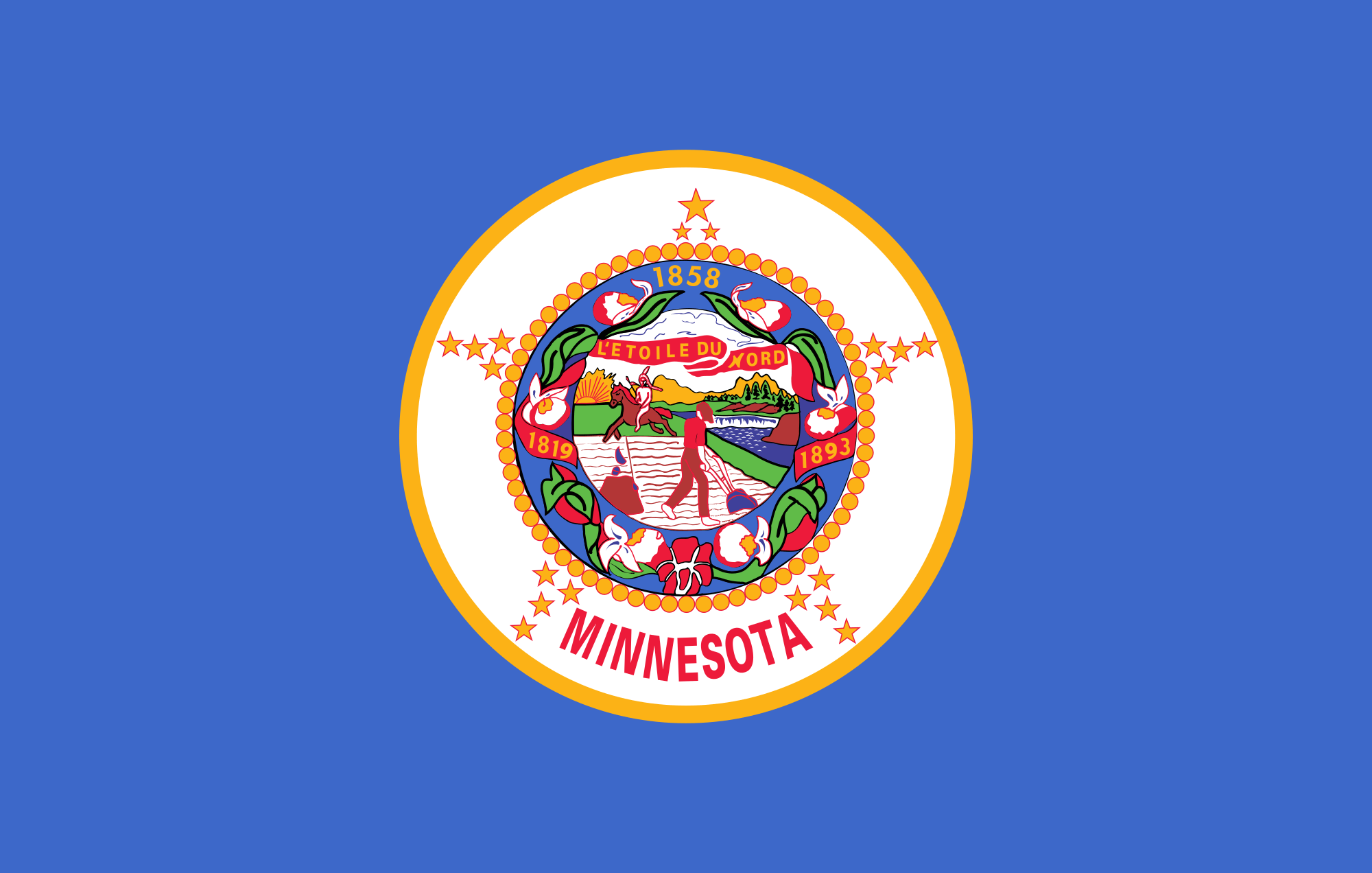Minnesota became the latest state to offer statewide paid family and medical leave as part of a series of sweeping and fundamental changes to Minnesota employment law made in the 2023 legislative session.
Quick Hits
- Minnesota’s new law creates a paid family and medical leave program to provide partial wage replacement for employees for twelve to twenty weeks in a fifty-two-week period for medical leave, bonding, caring for a family member, safety leave, or a qualifying exigency leave.
- Employees may begin taking paid leave in January 2026.
On May 25, 2023, Governor Tim Walz signed House File (HF) 2 into law to create a state paid family and medical leave program. The law provides employees with partial wage replacement for a minimum of twelve weeks, up to twenty weeks, of leave in a fifty-two-week period for medical leave, bonding with a new child, caring for a family member, safety leave, or a qualifying exigency leave. The new law goes into effect on January 1, 2026, at which time employers will also be required to pay into the state fund. Unlike the federal Family and Medical Leave Act (FMLA), the state law will apply to Minnesota employers of all sizes.
Paid Family and Medical Leave Program
HF 2 creates a paid family and medical leave program to be administered by the commissioner of Employment and Economic Development. The law will provide employees with partial pay for leave when they are “unable to perform regular work due to a serious health condition, a qualifying exigency, safety leave, family care, bonding, or medical care relate to pregnancy.”
Types of Leave
Serious Health Condition
The law defines “serious health condition” as “a physical or mental illness, injury, impairment, condition, or substance use disorder that involves” either “inpatient care” or “continuing treatment or supervision by a health care provider.” “Inpatient care” means “an overnight stay in a hospital, hospice, or residential medical care facility, including any period of incapacity, or any subsequent treatment in connection with such inpatient care.” The continuing treatment must involve one of the following:
- a period of incapacity of seven or more days;
- incapacity due to pregnancy and medical care related to pregnancy, including prenatal care;
- incapacity for the treatment of a chronic health condition that requires periodic medical visits over an extended period of time;
- incapacity due to a chronic longer-term health condition “for which treatment may not be effective”; or
- a period of absences to receive multiple medical treatments, including recovery time.
Note that this definition of “continuing treatment” varies slightly from the definition in the FMLA, which, among other differences, applies to a period of incapacity of only three or more full, consecutive days.
Bonding Leave
Under the law, leave for “bonding” is defined as time spent with a biological, adoptive, or foster child “in conjunction with the child’s birth, adoption, or placement.” Bonding leave eligibility ends within twelve months following the birth or placement of a child, except in cases where the “child must remain in the hospital longer than the mother,” in which case the leave must end within twelve months of the child leaving the hospital.
Additionally, bonding leave may be used prior to the placement or adoption of a child for employers to “attend counseling sessions,” “appear in court,” “consult with the attorney or doctors representing the birth parent,” “submit to a physical examination,” or “travel to another country to complete the adoption.”
Family Care Leave
The law will allow employees to take leave to care for a “family member” with a “serious health condition” or to care for a “family member who is a military member.” Family members are defined broadly under the act as including: (1) a spouse or domestic partner; (2) a biological, adopted, foster child, or stepchild; (3) a child with whom the applicant stands in loco parentis, is a legal guardian, or is a de facto parent; (4) a sibling; (5) a grandchild; (6) a grandparent; (7) a son-in-law or daughter-in-law; or (8) “an individual who has a relationship with the applicant that creates the expectation and reliance that the applicant care for the individual, whether or not the applicant and the individual reside together.” In contrast, the FMLA’s leave provisions to care for a family member only apply to a spouse, son, daughter, or parent.
Safety Leave
Employees will be allowed to take “safety leave” referring to leave related to domestic abuse, sexual assault, or stalking of employees or employees’ family members. Specifically, leave is allowed to “(1) seek medical attention related to the physical or psychological injury or disability cause by domestic abuse, sexual assault, or stalking; (2) obtain services from a victim services organization; (3) obtain psychological or other counseling; (4) seek relocation due to the domestic abuse, sexual assault, or stalking; or (5) seek legal advice or take legal action, including preparing for or participating in any civil or criminal legal proceeding related to, or resulting from, the domestic abuse, sexual assault, or stalking.”
Qualifying Exigency Leave
A “qualifying exigency” refers to “a military member’s active duty service or notice of an impending call or order to active duty in the United States armed forces.” The reason for leave may include the need to provide care for the military member’s dependent, making financial or legal arrangements, attending counseling, attending military events or ceremonies, or spending time with a “family member during a rest and recuperation leave or following return from deployment,” or making arrangements related to the death of the military member.
Length of Leave/Intermittent Leave
Unlike the FMLA, the Minnesota law will enable employees to take more than twelve weeks of paid leave under some circumstances. Employees may take up to twelve weeks of paid leave for their own serious health conditions and also may take up to twelve separate weeks of paid leave for bonding, family care, safety, or a qualifying exigency. The total amount of combined leave is limited to twenty weeks in a full year. Like the FMLA, employees may take leave intermittently, but intermittent leave is limited to 480 in one year; any additional leave must be taken continuously.
Employee Eligibility
An employee may be eligible to receive benefits under this new law if: (1) the employee is unable to perform work due to any of the above types of leave; (2) the employee has earned at least 5.3 percent of the state’s average annual wage; and (3) the employee is able to fulfill the certification requirements. Certification depends on the type of leave sought, and generally requires that an employee provide some sort of proof of the need for the leave. For example, under the law, for leave for a serious health condition, it will “be sufficient if the certification states the date on which the serious health condition began, the probable duration of the condition, and the appropriate medical facts within the knowledge of the health care provider.”
Benefit Compensation
Under the law, the commissioner must pay the benefits from the state family and medical benefit insurance fund to eligible employees who apply for paid leave and the benefits must be paid weekly. Eligible employees taking leave will be entitled to:
- “90 percent of wages that do not exceed 50 percent of the state’s average weekly wage; plus”
- “66 percent of wages that exceed 50 percent of the state’s average weekly wage but not 100 percent; plus”
- “55 percent of wages that exceed 100 percent of the state’s average weekly wage.”
Interplay With Other Leave
If an employee’s leave is covered by both the new Minnesota paid leave law and the federal FMLA, the employer may require both leaves to run concurrently. FMLA leave, while protected, is unpaid. Further, paid leave under the new Minnesota law is in addition to any paid time off to which an employee is entitled under Minnesota’s new statewide sick and safe leave program, which was also recently enacted as part of an omnibus jobs and economic development bill. That sick and safe leave program goes into effect on January 1, 2024.
Employer Premiums
Under the program, family and medical leave premiums accrue and become payable by employers each year based on the taxable wages paid by the employer to covered employees. The premiums are due quarterly. Beginning on January 1, 2026, annual employer premium rates as follows:
- 0.7 percent for employers participating in both the family and medical benefit program;
- 0.4 percent for employers participating in only the medical benefit program and have an approved private plan for the family leave benefit program; and
- 0.3 percent for employers participating in the family benefit program and with an approved private plan for the medical benefit program.
Employers must pay at least 50 percent of the annual premiums with the rest paid by employees through a deduction in their wages. However, deductions charged must not cause an employee’s wage to fall below the minimum rate required by law.
Notice to Employers
Employees must provide at least thirty days’ advance notice before taking leave if the leave is “foreseeable.” Otherwise, if “notice is not practicable because of a lack of knowledge of … when leave will be required to begin … notice must be given as soon as practicable.” However, an employer “may require” employees to comply with the employer’s “customary notice and procedural requirements for requesting leave,” such as call-out policies unless “unusual circumstances or other circumstances” dictate otherwise.
Leave for a serious health condition may be taken intermittently, but employees requesting such leave will be required to provide their employers with a “schedule of needed workdays off as soon as practicable” and make reasonable efforts to schedule the leave in a way “as to not disrupt unduly the operation of the employer.” If this is not possible, employers may not require employees to change their leave schedule to “accommodate the employer.”
Notice to Employees
Employers must comply with various notice requirements under this new law. First, the new law revises other portions of Minnesota law to require employers to include “any amount deducted by the employer … and the amount paid by the employer based on the employee’s wages” on employee earnings statements.
Second, the law will require employers to provide employees with a notice that includes:
- an “explanation of the availability of family and medical leave benefits”;
- “the amount of premium deductions made by the employer”;
- “the name and mailing address of the employer”;
- “the identification number assigned to the employer”;
- “instructions on how to file a claim for family and medical leave benefits”;
- “the mailing address, e-mail address, and telephone number of the department”; and
- “any other information required by the department.”
Employers must post that notice in “a conspicuous place” on their premises and issue the notice to each employee within thirty days of their employment or thirty days before the collection of premiums begins. Minnesota administrative agencies will issue a uniform employee notice form.
Employment Protections
The family and medical leave law will require employers to maintain health insurance coverage for employees and any dependents as if the employees were not on leave, though employees must continue to pay their share of the cost of such benefits. Employees will also be entitled to return to the same position they had before the leave, or “an equivalent position with equivalent benefits, pay, and other terms and conditions of employment.” This right to reinstatement exists even if the employer has replaced the employee’s position or the “position has been restructured to accommodate the employee’s absence.”
The law prohibits employers from retaliating against employees who take leave or obtain benefits under the law. The law further prohibits employers from interfering with an employee’s leave or benefits and subjects employers to fines of not less than $1,000 and up to $10,000 per violation, “payable to the employee aggrieved.”
In addition, the law will provide employees with a right of action to recover damages, liquidated damages, injunctive and other equitable relief, attorneys’ fees, expert witness fees, and other costs of a legal action. The law further will allow employees to bring an action on behalf of themselves or as a class action.
Next Steps
Employers may want to consider taking steps now to prepare for the launch of the family and medical leave program, including reviewing workflow to accommodate leaves and workplace policies to ensure they are consistent with the new leave allowances. Further, while benefits are not set to kick in until January 2026, certain aspects of the law take effect sooner. More regulations are also likely to come clarifying the contours of the new leave program.
Ogletree Deakins’ Minneapolis office will continue to monitor developments and will provide updates on the Minnesota and Leaves of Absence blogs as additional information becomes available.
For more information on the many new laws and amendments coming out of the Minnesota Legislature’s recently concluded 2023 session, please join us for our upcoming webinar, “2023 Minnesota Legislative Update—A Busy Session With Significant Implications for Employers,” which will take place on Friday, June 23, 2023, from 1:00 p.m. to 2:00 p.m. EDT. The speakers, Brent D. Kettelkamp, Jody Ward-Rannow, Nathan T. Boone, and Colin H. Hargreaves, will discuss the developments. Register here.
Follow and Subscribe LinkedIn | Twitter | Webinars | Podcasts







